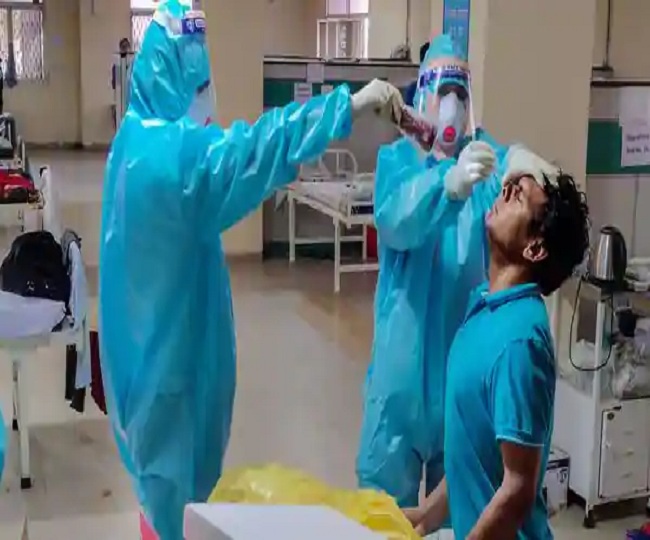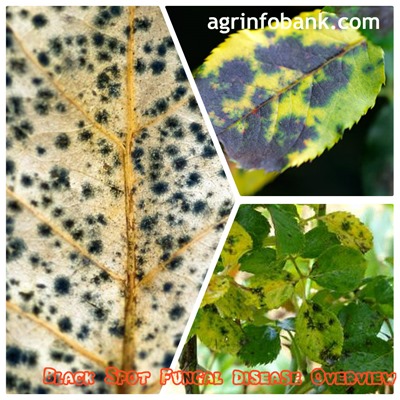This time, we’re going to talk about Treating Black Spot Fungus. There is a lot of information about Black Spot Treatment on the internet, of course. Social media are getting better and better quickly, which makes it easier for us to learn new things.
How To Treat Black Spots On Plumeria Leaves and treatment for black spot fungus are also linked to information about treatment for black spot fungus. As for other things that need to be looked up, they are about How To Treat Black Spots On Plumeria Leaves and have something to do with Does Black Spot Disease Kill Fish.

28 Tips for Treating Black Spot Fungus | Black Spot Plant Disease
- This fungal disease, caused by the fungus Venturia inaequalis, appears in early spring and spreads quickly among apple and crabapple trees. It starts with light brown circular spots on leaves and fruit, which then darken and sink into the tissue surface (looking like scabs). Fungal spores often appear in the scabs as the leaves become deformed and fruit drop prematurely. Unlike some other leaf spot problems, apple scab is a serious disease that needs to be treated with preventive fungicide applications in spring. - Source: Internet
- Anthracnose is an annual fungal leaf disease caused by the fungus Colletotrichum lagenarium. It kills early spring leaves, as the pathogen prefers cool, wet weather. Irregular areas of brown can be seen along the central leaf veins, small dead spots appear, and eventually the entire leaf shrivels and dies. Leaves that appear in late spring and summer are rarely infected, as the weather is hotter and drier. - Source: Internet
- First of all, you must know what actually these black spots are. They are actually a fungal disease typically caused from moist and cooler weather. Blackspot disease is one of the most common diseases of rose bushes; and, if left unchecked, it can cause quite a bit of damage to your rose plants. The causative organism is the fungus Diplocarpon rosae. - Source: Internet
- Therefore, if you are not familiar with a batch of chemicals or a kind of fish, make a preliminary test before treating your fish stock (see paragraphs 28 and 29). In all cases, closely follow the procedures suggested earlier. - Source: Internet
- Water in the morning. Evening watering schedules promote mold and fungus, including black spot. That’s because moisture and darkness make ideal conditions for these microorganisms to grow on plants. Morning watering gives the sun’s rays a chance to dry splashes of water on the leaves. Switch your watering schedule to the morning instead evening. - Source: Internet
- By far the most popular method of treating black spot on roses is through the use of conventional sprays. Sulfur compounds are effective at treating black spot. Safer® Brand Garden Fungicide uses sulfur as the active ingredient and is available in a convenient spray bottle or concentrate that can be mixed according to package directions for a foliar spray. - Source: Internet
- Cedar-apple rust, caused by the fungus Gymnosporangium juniperi-virginianae, is widespread throughout northeast Ohio. In early summer, you’ll start to notice pale yellow spots on apple (or hawthorn) leaves. Over time, the spots get larger and turn a bright yellow-orange color that’s visible on both the upper and lower leaf surfaces. Eventually, small black dots (fungal bodies) appear within the spots and leaves may fall off. In most cases, cedar-apple rust doesn’t need preventive treatment; good cultural and sanitation practices usually do the trick. - Source: Internet
- The fungus is caused by spores that are found in unfavorable environments. (We’ll get to good conditions a bit later.) These spores germinate in the spring and spread onto the plant through splashing water. They will only start infecting the rose if the plant is wet for 7 continuous hours. The existing spores have the ability to produce new spores that get splashed onto other leaves, which is how the infection spreads. - Source: Internet
- Another important prevention tip is to create as much airflow as possible at soil level. Congestion around your plants creates ideal conditions for soil fungus and disease to incubate, so by opening it up a bit, we can reduce the humidity and give the leaves a better chance to dry out. Prune the lower stems of plants first and clear up dead plants and debris as soon as possible. Use a layer of mulch on the soil to counteract the drying effects of the improved airflow. - Source: Internet
- Large black (or purple) spots appear on the top of the leaf. If you look closely, sometimes you can see individual strands of the fungus. This is how it has established its name. The rest of the leaf tissue turns yellow . - Source: Internet
- If you’ve started noticing some black spots on roses in your garden, chances are they’re infected with black spot disease. This disease, scientifically known as Diplocarpon rosae, is a fungus that causes parts of the leaves to develop black spots, eventually yellowing and falling off. So, why get rid of it? Aside from just causing the leaves to decay, it also weakens the rose plant as a whole. Treating black spots on roses as soon as you notice them is key to keeping the rose plant happy and healthy. - Source: Internet
- Black spot is a tenacious fungus — it thrives in warmth and moisture, but it tolerates a wide range of conditions including extreme heat and cold. Even a harsh winter won’t kill the spores lying dormant in your garden. To get rid of black spot disease on roses, you’ll need to try one or more of the four steps listed later in this article. - Source: Internet
- At first, roses show no signs of infection. After the spores alight on a rose bush, it takes about two weeks for them to germinate and develop into mature fungus that can reproduce. Signs of black spot infection start small but rapidly increase, especially if the weather is particularly hot and humid. - Source: Internet
- Although the names are similar, a different fungus (Phyllosticta minima) causes this maple leaf disease. It forms light brown circles or irregularly shaped areas that have dark outlines. Like maple tar spot, this leaf disease is not fatal and doesn’t do much damage to trees, although it can be very visible in the landscape, especially on silver and red maples. - Source: Internet
- The main source of infection is spore masses produced on old, undecomposed leaves and shrivelled fruit. The spores are spread by rain splash, by overhead irrigation and on the hands of pickers. The fungus may also be introduced in diseased runners. - Source: Internet
- If this scenario sounds familiar, welcome to the bane of the rose gardener’s existence: black spot on roses. Black spot (Marssonina rosae or Diplocarpans rosae) is a fungal disease considered to be the most serious rose disease in the world. The parasitical fungus spreads rapidly through direct contact among roses — usually at an infected grower’s site or in the home garden — or through wind-borne spores. Once black spot takes hold on a rose bush, it can quickly decimate the plant or weaken it to the extent that the plant dies. - Source: Internet
- (see Section 4.6) using quicklime, hydrated lime, calcium cyanamide or, if necessary, agricultural by-products; how to disinfect undrained ponds (see Section 4.7) using organic poisons. Remember that this is never as effective as treating drained ponds, which is preferred. - Source: Internet
- Rose black spot (sometimes called black spot disease) is caused by a fungus by the name of Diplocarpon rosae. It overwinters in the form of spores in the soil, particularly on old, infested leaves and shoots. But plants can also be infected by the wind. In wet weather with temperatures above 15 °C and high humidity, the fungus spreads particularly quickly. - Source: Internet
- You are treating fish stock in 50-l buckets, and you need a treatment dosage of 1 mg/l. You have a 20-ml beaker for dosing the chemical. What strength of solution do you need to give the correct dosage, using one beaker full for every bucket? - Source: Internet
- In a previous manual in this series (see Section 2.0, Water, 4 ), you learned how to determine the volume of water in a pond by multiplying its surface area by the average water depth. Keep in mind that both these values may change as the pond ages. Be sure to adjust your estimate of water volume accordingly before treating any pond. - Source: Internet
- Fungicides are chemicals used to kill parasitic fungi or their spores. When using fungicides, pay attention to the weather. Rainfall can remove fungicide layers from roses – and create moist conditions perfect for fungus dispersal. Spray the roses after a period of heavy rain. - Source: Internet
- Safer® Brand Neem oil, produced by the Asian Neem tree, offers some relief of black spot. Neem has notable antifungal properties that seem to work well on roses. Neem oil is also useful against powdery mildew, which is another fungus roses tend to get. - Source: Internet
- Black spot is caused by a fungus, Marssonina rosae or Diplocarpans rosae. Scientists give this fungus two names to signify its normal state — Marsonnina — and its reproductive state — Diplocarpans. Most rose gardening sites simply refer to it as Diplocarpans rosae since it causes the most trouble when it’s reproducing and spreading throughout your garden, leaving behind noticeable yellow leaves with black spots on rose bushes. - Source: Internet
- The white crust that covers the wound of your fish falls off, leaving an open wound. At this stage, your fish are prone to infection or fungus. Yep, it’s possible for fish to have more than one disease at once. - Source: Internet
- Keep in mind that roses may be resistant in one location, but not when planted in another. That’s because there are numerous strains of the black spot fungus. For example, a rose may be resistant in Oregon to one strain but susceptible to the strain living in Pennsylvania. Always try to purchase plants grown locally for your best chance at roses resistant to black spot. - Source: Internet
- Step 1: Inspect your roses once a week for signs of black spot. The fungus usually starts on the lower leaves and makes its way upward, so check the top and undersides of leaves for circular dark spots. These spots will not have clean edges and will instead look more uneven and feathery. - Source: Internet
- The black spot fungus stays dormant over winter. Prolonged wet and cool conditions trigger the dispersal of fruiting structures. As a result, germination is standard during the UK spring. - Source: Internet
- If you run your own hatchery, it is best to treat your eggs regularly against the very common infection caused by the fungus Saprolegnia (see Section 15.3). There are several treatments, depending on the type of incubator you use. - Source: Internet

Here are a few tips to help you find information about treating black spot disease fish:
- Look for good places to get information about Black Spots On Tree Bark. This can be done in libraries, on websites, or even by paid journalists.
- When looking for information about Cichlid Black Spot Disease Fish, it’s important to know that there are different kinds of online sources, like Google and YouTube. Social media sites like Facebook and Twitter are also good places to look for information about Home Remedies For Black Spots On Plants.
Video | Treating Black Spot Fungus
To get the best information about Black Spots On Tree Bark, you should read to find out how true each source is.
This article has a few videos from different places about Black Spots On Tree Leaves Treatment that will help you learn more about it. The Internet is a great place to find out about a wide range of things.
## Here are some crucial aspects concerning Black Spot Disease Fish Safe To Eat:- Treating Black Spot Fungus On Roses
- Treating Black Spot Fungus
- Treatment Black Spot Disease
- Treating Black Spot Disease Fish
- Treating Black Spot Disease In Roses

With so many websites and forums that talk about Black Spots On Tree Leaves Treatment, it shouldn’t be hard to find what you need.
Most people are used to getting information about Best Fungicide For Black Spot in a very different way than this. It lets you look at the information about How To Treat Black Spots On Plumeria Leaves and how it can be used in more detail.
/Tomatoblight-GettyImages-171250079-59d3dc1ad088c00011896036.jpg) ways to put information about Black Spot Disease Fish Safe To Eat in a way that looks good and is useful. They can be used in business and marketing, and they can also be used to talk about How To Treat Black Spots On Indoor Plants. So, we also give you some pictures about Battling Black Spot.
ways to put information about Black Spot Disease Fish Safe To Eat in a way that looks good and is useful. They can be used in business and marketing, and they can also be used to talk about How To Treat Black Spots On Indoor Plants. So, we also give you some pictures about Battling Black Spot.
In the end, this article gives a summary of A volunteer-populated online database provides evidence for a geographic pattern in symptoms of black spot infections. Also talked about are treating black spot disease fish and Black Spots On Tree Leaves Treatment, which you can use to compare how much you know about Home Remedy for Black Spot Disease.